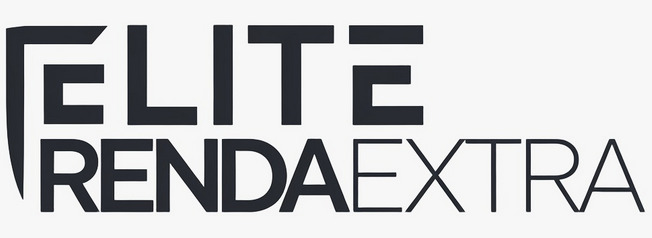Facing significant expenses or looking to consolidate debt can often lead individuals to explore financing options beyond typical small loans. When the need surpasses a few thousand dollars, perhaps reaching $10,000 or more, the landscape of borrowing changes slightly, bringing large personal loans into focus.
Understanding these larger loan amounts, how they work, and the importance of comparing offers is crucial before making any decisions. This information aims to shed light on the process, helping you navigate the considerations involved when seeking substantial personal financing online.
Understanding Large Personal Loans: What Are They?
A large personal loan is typically defined as an unsecured loan amounting to $10,000 or significantly more, sometimes extending up to $50,000 or even $100,000, depending on the lender and the borrower’s qualifications. Unlike mortgages or auto loans, personal loans are generally unsecured, meaning they don’t require collateral like a house or car. The lender provides the funds based primarily on your creditworthiness and ability to repay.
These loans are versatile and can be used for a wide array of purposes. Common reasons people seek out larger personal loans include:
- Debt Consolidation: Combining multiple high-interest debts (like credit cards or other loans) into a single loan, potentially with a lower interest rate and a fixed monthly payment.
- Home Improvements: Funding major renovations, repairs, or upgrades to a property without tapping into home equity.
- Major Life Events: Covering significant costs associated with weddings, adoptions, or extensive travel.
- Medical Expenses: Paying for substantial medical bills or procedures not fully covered by insurance.
- Large Purchases: Financing significant one-time purchases where other options might be less suitable or more expensive.
- Business Start-up or Expansion (for some lenders): While dedicated business loans exist, some individuals use personal loans for initial business funding.
*
The flexibility in use is a key attraction, but it also underscores the importance of borrowing responsibly and only for needs that justify taking on significant debt.
Why Comparing Large Personal Loan Offers is Essential
When dealing with substantial sums like $10,000 or more, even small differences in loan terms can have a significant impact on your finances over the life of the loan. Comparing offers from multiple lenders is not just recommended; it’s a critical step towards securing the most favorable terms possible.
Here’s why comparison matters so much:
- Interest Rates (APR): The Annual Percentage Rate (APR) reflects the true cost of borrowing, including interest and certain fees. Lenders offer different rates based on their risk assessment and business model. Finding a lower APR can save you hundreds or even thousands of dollars in interest payments.
- Loan Terms: The repayment period (term) affects both your monthly payment amount and the total interest paid. A shorter term means higher monthly payments but less interest overall. A longer term lowers monthly payments but increases the total interest cost. Comparing helps you find a balance that fits your budget.
- Fees: Lenders might charge various fees, such as origination fees (a percentage of the loan amount deducted upfront), late payment fees, or sometimes prepayment penalties (though less common for personal loans). Understanding and comparing these fees is crucial for calculating the total loan cost.
- Lender Reputation and Service: Comparing involves looking beyond just the numbers. Consider lender reviews, customer service responsiveness, and the ease of the application and management process.
Online comparison platforms and individual lender websites provide the tools to evaluate different loan scenarios side-by-side, making this crucial step more manageable.
Key Factors Lenders Evaluate for Loans Over $10,000
Securing a large personal loan requires lenders to have significant confidence in your ability to repay. They scrutinize several factors more closely than they might for smaller loan amounts. Understanding these elements can help you prepare.
Credit Score and History
Your credit score is a primary indicator of your creditworthiness. For larger loans, lenders typically look for good to excellent credit scores (often FICO scores in the high 600s, 700s, or above). A strong credit history demonstrating responsible borrowing and timely payments is essential. While some lenders cater to borrowers with lower scores, the rates and terms will likely be less favorable, and qualifying for amounts over $10,000 might be more challenging.
Income and Employment Stability
Lenders need assurance that you have a stable and sufficient income source to cover the monthly loan payments alongside your other financial obligations. They will typically require proof of income, such as pay stubs, tax returns, or bank statements. Employment history and stability can also play a role in their assessment.
Debt-to-Income Ratio (DTI)
Your DTI ratio compares your total monthly debt payments (including the potential new loan payment) to your gross monthly income. Lenders use this ratio to gauge your ability to manage additional debt. A lower DTI (generally below 36%-43%, though requirements vary) indicates less risk and improves your chances of approval, especially for larger loan amounts.
Loan Purpose
While personal loans offer flexibility, some lenders might inquire about the loan’s purpose. Using funds for debt consolidation or home improvement might be viewed more favorably than using them for speculative investments or discretionary spending, although this varies by lender.
The Online Comparison Process: What to Expect
Comparing large personal loan offers online has become increasingly streamlined. While processes vary slightly between platforms and lenders, the general steps often involve:
- Initial Information Gathering: You’ll typically start by providing basic information, such as the desired loan amount, the purpose of the loan, your estimated credit score range, and your state of residence.
- Soft Credit Inquiry (Pre-qualification): Many online lenders and comparison tools use a soft credit inquiry to check your potential eligibility and show preliminary offers. This type of inquiry does not impact your credit score. It allows you to see estimated rates and terms you might qualify for based on initial data.
- Reviewing Preliminary Offers: Based on the soft inquiry, you may receive several potential loan offers outlining estimated APRs, monthly payments, and loan terms from different lenders. This is the core comparison stage. Look closely at the APR, fees, and repayment duration for each option.
- Selecting an Offer and Formal Application: If you find an offer that seems suitable, you can proceed to a formal application directly with that lender. This stage typically involves providing more detailed personal and financial information and documentation (like proof of income, ID, address verification).
- Hard Credit Inquiry and Underwriting: Submitting a formal application will usually trigger a hard credit inquiry, which can slightly affect your credit score. The lender will then conduct a thorough underwriting process, verifying your information and making a final decision on approval and the specific terms.
- Loan Agreement and Funding: If approved, you’ll receive a formal loan agreement detailing all terms and conditions. Review this carefully before signing. Once signed, the funds are typically disbursed directly to your bank account, often within a few business days.
Remember, pre-qualification offers are estimates. The final terms are only confirmed after the lender completes the full underwriting process.
Types of Lenders Offering Large Personal Loans
Several types of financial institutions offer personal loans, including larger amounts. Each has its potential advantages and disadvantages:
Traditional Banks
Major banks and regional banks often provide personal loans. If you have an existing relationship with a bank, you might find familiarity and potentially relationship-based benefits. However, their approval criteria can sometimes be stricter, and the application process might be less streamlined compared to online-only lenders.
Credit Unions
Credit unions are non-profit, member-owned institutions. They often offer competitive interest rates and lower fees compared to banks, particularly for their members. Eligibility usually requires membership, often based on location, employer, or association affiliation. They may offer more personalized service but might have fewer online capabilities than fintech lenders.
Online Lenders (Fintech Companies)
These lenders operate primarily or entirely online. They often leverage technology for faster application processing and funding times. Many specialize in personal loans and may offer competitive rates due to lower overhead costs. They frequently provide robust online comparison tools and pre-qualification options with soft credit checks. The range of credit scores they accept can also be broader, though the best rates are still reserved for those with strong credit.
Comparing offers across these different types of lenders is advisable to ensure you find the best fit for your specific financial situation and needs.
Preparing Yourself Before Seeking a Large Loan
Taking proactive steps before you start comparing or applying can improve your chances of securing favorable terms:
- Check Your Credit Report: Obtain copies of your credit report from the major bureaus (Equifax, Experian, TransUnion). Review them for accuracy and dispute any errors. Knowing your score helps you understand what range of rates you might expect.
- Assess Your Budget: Determine exactly how much you need to borrow and, more importantly, how much you can realistically afford to repay each month. Avoid borrowing more than necessary.
- Gather Documentation: Be prepared to provide proof of income (pay stubs, W-2s, tax returns), identification (driver’s license, passport), proof of address (utility bill), and potentially bank statements. Having these ready speeds up the application process.
- Improve Your Credit (If Possible): If your timeline allows, taking steps to improve your credit score before applying – such as paying down existing debt balances or ensuring on-time payments – can lead to better loan offers.
Responsible Borrowing Considerations
Taking on a significant loan like $10,000 or more is a major financial commitment. It’s crucial to borrow responsibly:
- Borrow Only What You Need: Resist the temptation to borrow more than your intended purpose requires, even if you qualify for a higher amount.
- Understand the Total Cost: Look beyond the monthly payment. Calculate the total amount you will repay over the loan term, including interest and fees.
- Have a Repayment Plan: Ensure the monthly payment fits comfortably within your budget without straining your finances. Missing payments can severely damage your credit.
- Read the Fine Print: Fully understand all terms, conditions, fees, and potential penalties outlined in the loan agreement before signing.
- Consider Alternatives: Evaluate if other options, like using savings, tapping into home equity (cautiously), or seeking assistance programs, might be more suitable before committing to a large loan.
*
*
*
Concluding Thoughts on Comparing Large Loan Offers
When financial needs exceed $10,000, large personal loans can provide a viable solution. However, the stakes are higher with larger sums, making careful consideration and thorough comparison absolutely essential. By understanding the factors lenders evaluate, the types of lenders available, and the online comparison process, you can approach the search for financing with greater confidence.
Focusing on the APR, fees, and loan term, while ensuring the repayment plan fits your budget, empowers you to make an informed decision. Utilizing online resources to compare offers efficiently can lead to significant savings and help you secure a loan that truly meets your needs without creating undue financial stress down the road. Responsible borrowing starts with diligent research and comparison.


